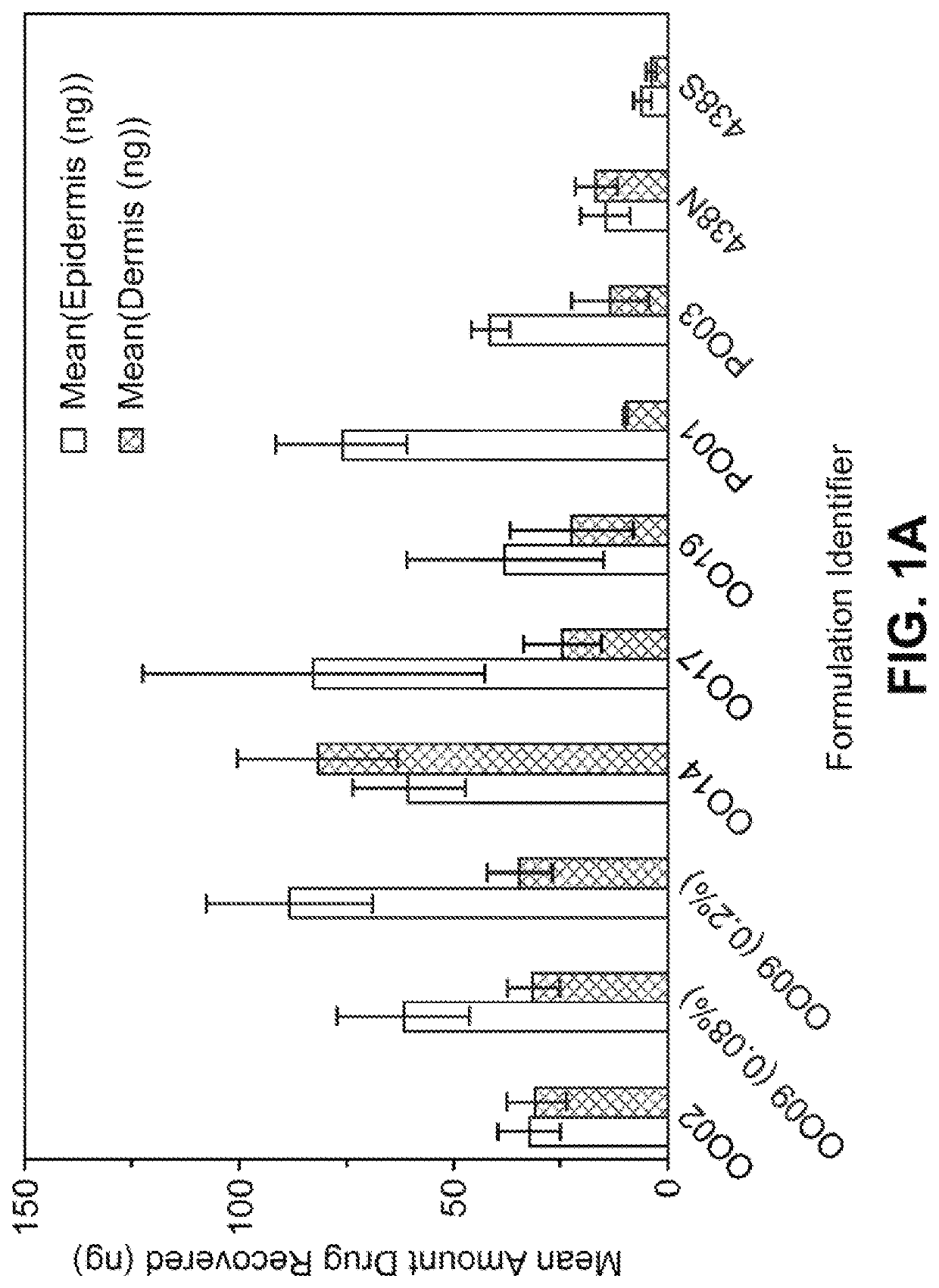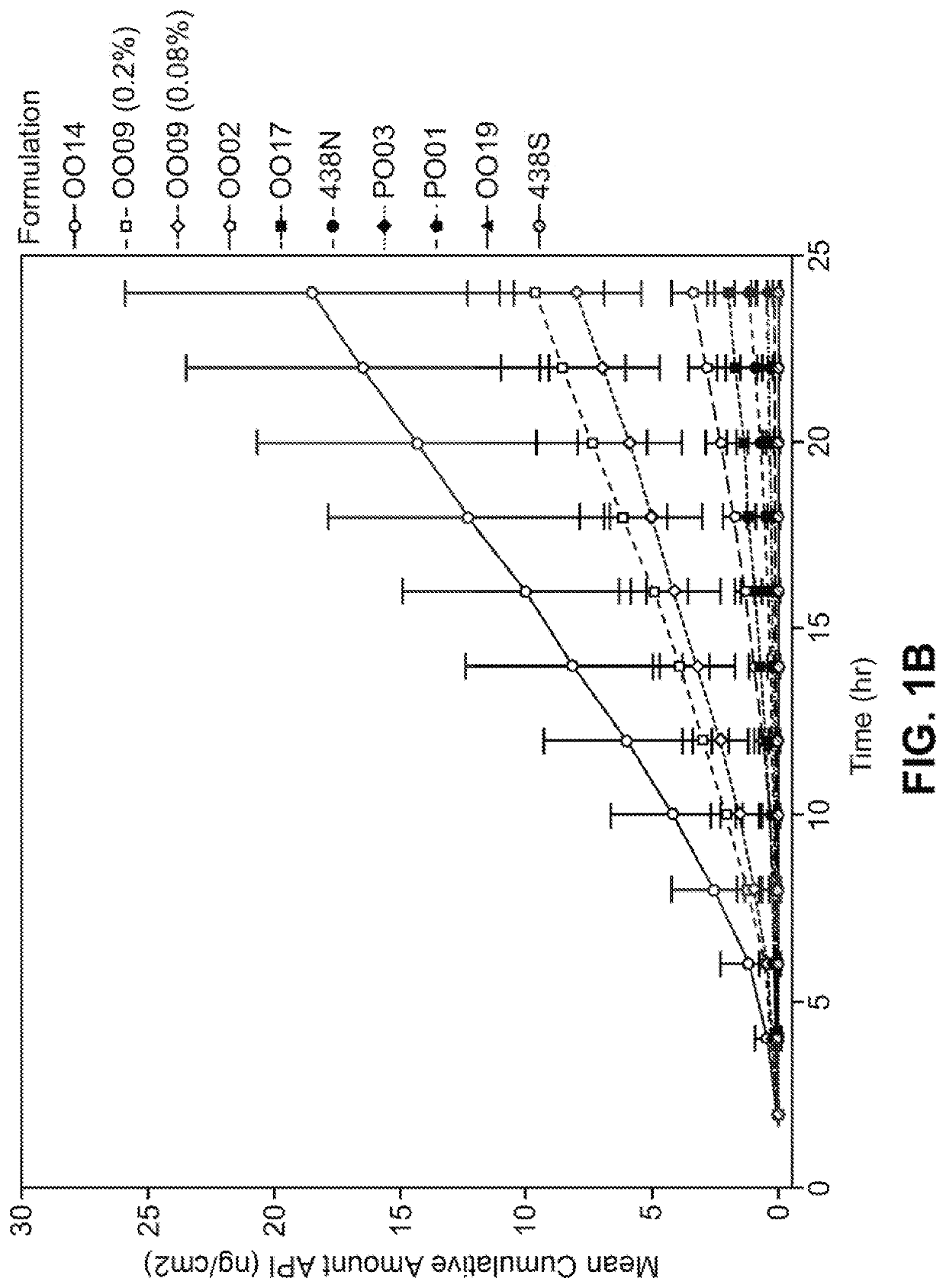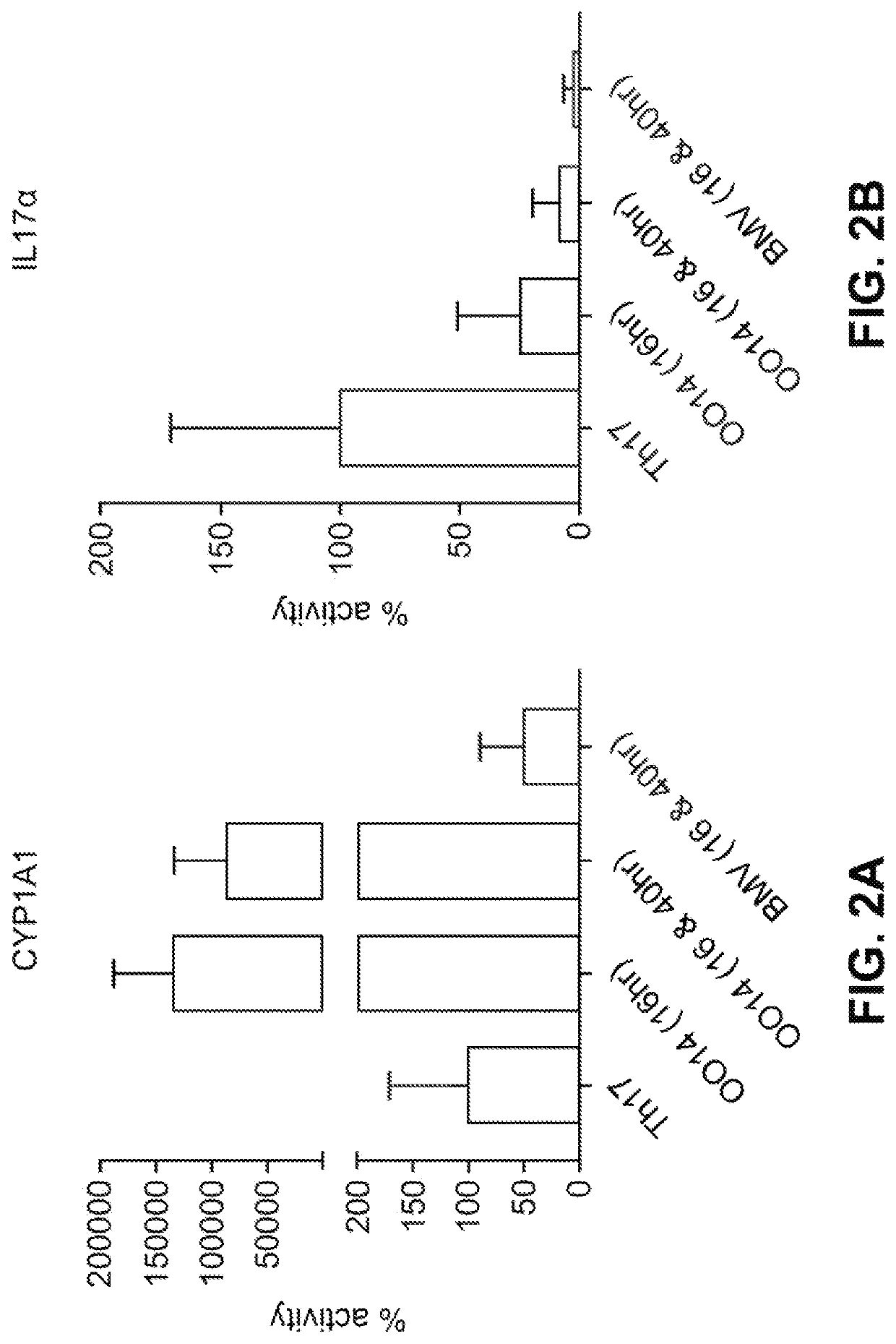Topical compositions and methods for treating inflammatory skin diseases
a technology for inflammatory skin disease and compositions, applied in drug compositions, aerosol delivery, oil/fat/waxes non-active ingredients, etc., can solve the problems of disease without a cure, severe negative impact on quality of life, and limited rational treatment approaches
- Summary
- Abstract
- Description
- Claims
- Application Information
AI Technical Summary
Benefits of technology
Problems solved by technology
Method used
Image
Examples
example 1
Exemplary Compositions
[0211]Compositions comprised of indigo are prepared as topical formulations with the ingredients and amounts (in weight percent based on total weight of the formulation) as shown in Table 1-1.
TABLE 1-1Ingredientswt / wt %wt / wt %wt / wt % wt / wt %wt / wt %wt / wt %wt / wt %wt / wt %wt / wt %indigo 7 7 7 7 7 7 7 7 7dimethyl sulfoxide93di-propylene glycol93ethanol93isopropanol93PEG 30093propylene glycol93diethylene glycol93monoethyl ether(Transcutol ®)PEG 40093water93
example 2
In Vitro Penetration and Pharmacokinetics in Human Skin of Topical Compositions Comprising Synthetic Indirubin
[0212]Compositions comprised of synthetic indirubin were prepared as topical formulations with the ingredients in the amounts (in weight percent based on total weight of the formulation) shown in Tables 2-1, 2-2 and 2-3.
[0213]The formulations were prepared by first adding synthetic indirubin and any antioxidant(s) into the non-oleaginous solvent(s) to either dissolve or suspend the synthetic indirubin in the solvent(s). Then, the oleaginouos component (oily liquid or polyethylene glycol component) and the wax component were added to the dissolved / suspended indirubin-solvent mixture. The oleaginouos component was heated to about 75° C. before addition. The mixture was homogenized for 2 minutes using a Silverson L4RT homogenizer at 10,000 RPM and then stirred on an IKA hotplate at 550 RPM until cooled to ambient temperature. The formulation identified as Formulation No. 438S w...
example 3
In Vitro Penetration and Pharmacokinetics in Human Skin of Topical Compositions Comprising Synthetic Indirubin
[0216]The compositions identified as formulation nos. OO29, OO75, OO76, OO40, OO54, OO61, OO77, OO65, OO67 and OO73 are tested as described in Example 2 and compared to the formulation no. 438N. The formulations (with the exception of 438N) contained synthetic indirubin that is fully in solution and is both chemically and physically stable over 2, 4, 6 or 12 months at 25° C. The test formulations deliver significantly more indirubin in the dermis, epidermis and receiver solution at 24 hours than the comparative control formulation no. 438N even though the test formulations contain less than or equivalent levels of indirubin. It is found that the test formulations deliver more than about 14.7 ng per cm2 of indirubin (6.4 μM) into the epidermis and more than about 16.9 ng per cm2 of indirubin (0.7 μM) into the dermis after 24 hours. The flux of all formulations is significantl...
PUM
| Property | Measurement | Unit |
|---|---|---|
| temperature | aaaaa | aaaaa |
| particles sizes | aaaaa | aaaaa |
| particles sizes | aaaaa | aaaaa |
Abstract
Description
Claims
Application Information
 Login to View More
Login to View More - R&D
- Intellectual Property
- Life Sciences
- Materials
- Tech Scout
- Unparalleled Data Quality
- Higher Quality Content
- 60% Fewer Hallucinations
Browse by: Latest US Patents, China's latest patents, Technical Efficacy Thesaurus, Application Domain, Technology Topic, Popular Technical Reports.
© 2025 PatSnap. All rights reserved.Legal|Privacy policy|Modern Slavery Act Transparency Statement|Sitemap|About US| Contact US: help@patsnap.com



